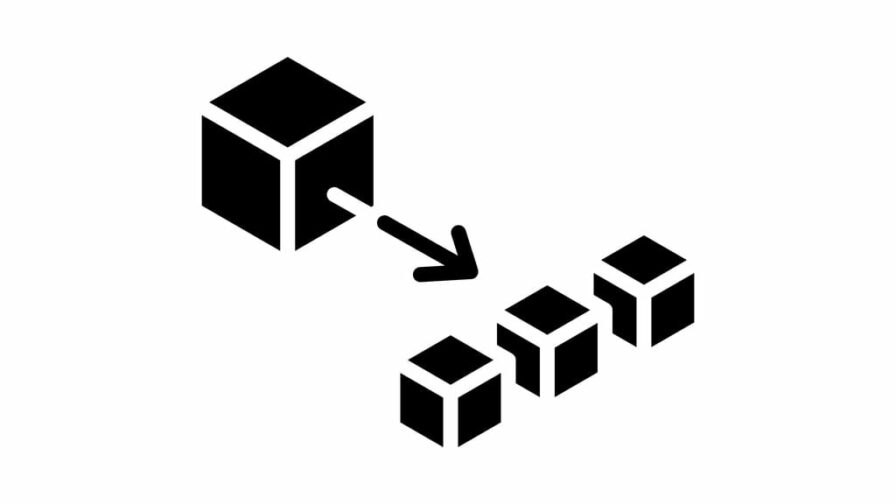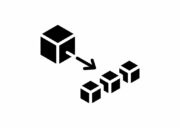
Organizations are rapidly adopting microservices architectures for their applications to remain agile, scalable, and robust. However, the very nature of microservices—being distributed and dynamic—presents unique challenges in visualizing and managing their interactions. Application mapping is a critical tool that gives a panoramic view of how applications and their components interplay.
This article explores why application mapping is indispensable for microservices-based applications, by offering a view of the intricate web of services, providing insights into their complex interactions and data flows, and helping organizations make effective use of the microservices pattern.
What Is Application Mapping?
In modern information technology, application mapping is a critical process where the interaction between software applications and hardware in a network is visualized and analyzed. This process aids in understanding the intricate relationships and dependencies between various business applications and the underlying IT infrastructure.
Application mapping provides a visual representation of how different applications are interconnected, and how they interact with one another. This holistic view is useful for IT professionals in managing and troubleshooting network issues, as well as for business leaders in making strategic decisions.
A well-executed application map provides comprehensive insights about your applications, their dependencies, and their performance. It provides a bird’s eye view of your entire IT landscape, allowing you to quickly spot bottlenecks, vulnerabilities, or potential points of failure. See this detailed blog post for more background on application mapping.
The Complex Landscape of Microservices
Multiple Independent Services
Microservices are multiple independent services, each running in its own process and communicating with each other via lightweight mechanisms, often an HTTP resource API. Each microservice is small and focuses on doing one thing well, thereby promoting modularity and making the application easier to understand, develop, and test.
However, the complexity of managing and orchestrating these independent services can be overwhelming. That’s where application mapping comes in, helping to simplify the understanding of these services and their interactions. Application mapping, in this context, helps guide you through the maze of microservices, providing clarity and direction.
Dynamic Interactions
In a microservices architecture, services are not static; they engage in dynamic interactions. These interactions can be complex and multifaceted, involving numerous requests and responses, data exchanges, and function calls. Understanding these dynamic interactions is vital for troubleshooting, optimizing performance, and for developing new features.
Application mapping provides a live, interactive visualization of these dynamic interactions. In this live view, you can see how microservices communicate, collaborate, and conflict with each other. This enables you to pinpoint issues, identify patterns, and make informed decisions on how to enhance your microservices architecture.
Data Management
Each microservice has its own database to ensure decoupling and independence. However, managing data consistency across these services can be challenging.
Application mapping can help in visualizing the flow of data across different microservices. This can be extremely beneficial in identifying data bottlenecks, ensuring data integrity, and optimizing data flow for better performance.
Monitoring, Logging, and Tracing
Monitoring, logging, and tracing are essential practices in a microservices environment. They provide vital information about the health and performance of your services, helping you to detect and rectify issues before they affect your users.
Application mapping greatly simplifies these practices by providing a unified view of the microservices landscape. With application mapping, you can monitor the status of each service, log activities, and trace transactions across services from a single interface.
Why Application Mapping Is Essential
Visibility and Understanding
In a complex IT environment, visibility and understanding are essential. Without a clear understanding of how your applications interact and depend on each other, it’s difficult to manage, troubleshoot, or enhance them effectively.
Application mapping provides this much-needed visibility and understanding. With an application map, you can see the big picture of your IT landscape and explore the details of specific interactions. It gives you the knowledge and insight to make informed decisions, whether you’re dealing with a network issue, planning a new feature, or making strategic business decisions.
Performance Monitoring
In an IT environment, poor performance can affect user experience, productivity, and even your bottom line. Therefore, it’s crucial to monitor your applications’ performance and take proactive measures to optimize it.
Application mapping shows you how your applications are performing in real-time and helps you to identify patterns, trends, and anomalies. This enables you to spot potential issues before they escalate, and to optimize your applications for peak performance.
Security and Compliance
One of the primary reasons for mapping applications is to ensure their security and compliance. As the number of applications within a business grows, so does the complexity of the network. This complexity can create vulnerabilities, making it easier for attackers to exploit the system. Application mapping helps identify these vulnerabilities, allowing for more effective security measures.
Application mapping also facilitates regulatory compliance. Many industries have strict regulations regarding data protection and privacy. A comprehensive application map can help demonstrate compliance to regulators by showing how data flows through the system and where it is stored. This can be useful during audits and can save significant time and resources.
Disaster Recovery and Redundancy Planning
If your business suffers a significant system failure, having a detailed application map can drastically reduce recovery times. An application map can provide a clear picture of which applications are most critical, helping to prioritize recovery efforts.
Application mapping also aids in redundancy planning. By understanding the dependencies between applications, you can create more effective redundancy plans. This means that if one application fails, the others can continue to function, minimizing business disruption.
Best Practices for Application Mapping with Microservices
Here are some ways to ensure you have accurate, usable application maps in a microservices environment.
Use Automated Mapping Tools
These tools can automatically discover and map the relationships between your applications, saving significant time and effort. Automated tools can also ensure your application map is always up-to-date, reflecting changes as they occur.
Continuous Monitoring
As your applications evolve and new ones are introduced, your application map needs to be updated. Continuous monitoring allows for real-time updates to the application map, ensuring it always reflects the current state of your network.
Facilitate Collaboration
Application mapping can foster collaboration within your team. A shared application map provides a common understanding of the network, facilitating communication and teamwork. This can be particularly beneficial in large teams or when working with external partners.
Manage Versioning and Changes
Application maps should keep track of versioning and changes. By recording and tracking each of the different versions of your applications and their dependencies, you can ensure smooth transitions when updating or changing applications.
Incorporate into DevOps
Incorporating application mapping into your DevOps practices can lead to significant benefits, ensuring the maps are up to date. Application maps can provide valuable insights into the deployment process, helping to identify potential issues before they become problems. This can lead to more reliable deployments and reduced downtime.
Conclusion
Mastering application mapping is an essential skill for businesses seeking to optimize their efficiency. By understanding the dependencies and interconnections between your applications, you can improve security, resilience, and agility. Whether you’re just starting out with application mapping or looking to improve your current practices, you need to make sure you’re building accurate application maps.



